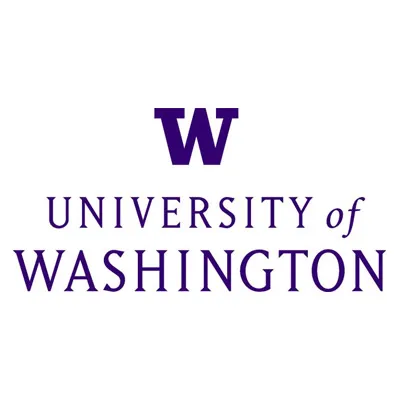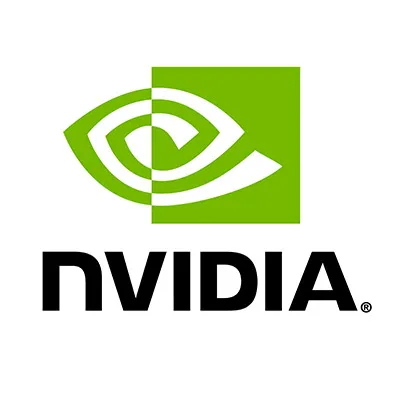The University of Washington, the University of Tsukuba in Japan, Amazon and NVIDIA are partnering to advance research and boost advancements in artificial intelligence.
The Cross-Pacific AI Initiative (X-PAI), established with the support of the US and Japanese governments in April 2024, supports research projects and collaborations, funds fellowships for doctoral and post-doctoral researchers, and promotes community projects.
The Cross-Pacific AI Initiative’s goal is to advance scientific research, including artificial intelligence research to drive transformative change to benefit society. In addition, the Cross-Pacific AI Initiative seeks to foster long-term research collaboration between all four institutions and develop partnership models that accelerate innovation.




Research funding: call for proposals
X-PAI welcomes proposals related to the following broad research areas in order to accelerate progress in advancing the state-of-the-art in AI and its applications to achieve significant enhancements in technological capabilities, improvements in the quality of human living, the assurance of better safety and transparency, etc.
Submissions in the following five research areas and their intersection will be prioritized this year:
1) Robotics
2) Health, aging, and longevity
3) Climate and sustainability
4) Improving AI model efficiency
5) Trustworthy AI
Award details
Selected proposals will be funded at $125,000- 400,000/year for two years. The budget should detail all costs including indirect costs. The number of awards will be determined by project fit. Funding will also possibly be in the form compute-in-kind.
Awards will be judged on their ability to advance our research interests, impact AI technology, and meet clear deliverables. Joint projects between the University of Washington and the University of Tsukuba as well as joint publication arising from the funded projects with Amazon and NVIDIA scientists are encouraged.
Submission deadlines
Letters of Intent and Conflicts of Interest Due: November 15, 2024
Full Proposals Due: March 19, 2025
Submitting your proposal
Letters of Intent and Conflicts of Interest: The submission window for letters of intent and conflicts of interest has closed.
Full Proposals: Full proposals are due March 19, 2025 by 11:59pm. Invited PIs will receive a private link to submit proposals.
Please contact the UW X-PAI team at xpaiuw@uw.edu with any questions.
Proposal materials
All proposals must use the standard proposal template formatting. When submitting, include the project proposal content as delineated below and the project letter of intent.
A letter of intent will be required prior to the proposal deadline including a tentative title, list of PIs, a 250-word abstract, potential conflict of interest, including current related collaborators, and indication of one or more of the above research areas if applicable.
Proposed Project Title:
Principal Investigator Information:
PI: <PI name>, <title>, <department name>, <university name>, <email address>
Co-PIs: <PI name>, <title>, <department name>, <university name/industry sponsor>, <email address>
Research Area: As defined in overall CFP (choose one or more, if applicable)
Abstract: (limited to 250 words): Abstract consists of an overview, statement on intellectual merit of the proposed activity, and a statement on broader impacts of the proposed activity. It should also include a brief description of the activity that would result if the proposal were funded and a statement of the methods to be employed. Intellectual merit should include potential of the proposed activity to advance knowledge. Broader impacts should include potential benefits to society and contribution to the achievement of specific, desired societal outcomes. The abstract should be informative to others working in the same or related fields and understandable to a broad audience within the scientific domain.
Potential Conflict of Interest: State all current collaborators at UW, UT, Amazon and NVIDIA on any project.
Introduction
Significance of the research and prior work. Include the intellectual merit, potential for societal and economic impact, and overall probability of success.
Methods
Your technical approach. Include key areas of risk and how your approach mitigates them. List any existing software or datasets required, along with additional information on how they will be used/incorporated and a link. This includes AWS/Amazon Open Data.
Expected Results and Dissemination Plan
This should be a complete listing of expected outputs (e.g., publications, presentations, open-source code, patents, etc.) Amazon and NVIDIA will provide a standard acknowledgment statement of support for publications and public-facing announcements.
Total cash and/or compute request:
Cash Funding Request: (Funding in USD needed). Please provide justification supporting the stated request.
Compute Request:
- Hours in the cloud needed*
- Number of concurrent GPUs needed:
- Amount of cloud storage needed:
*Assume A100 40GB. Note 1 hour on a 4X.A100 instance = 4 GPU hours.
Cloud Readiness: (Fill this section only if requesting cloud resources.)
Describe the OS your development environment or application runs on. Include what will be your first few activities if given a cloud GPU server.
Note your experience with these activities:
- Importing your data (pulling down from another site)
- Installing dependencies (e.g., pip)
- Installing and executing code base at the command line
- Backing up any intermediate results, as clouds may be ephemeral
- Building and running containers
Data Set and Model (Fill this section only if requesting cloud resources.)
Share details about the size, type, and location of data:
- Number of TBs
- Data type (video, LiDAR, voice, text, etc.)
- Collected in-house or open-source
- Confidential, or with personal data (describe restrictions, whether NDA is needed)
- Approximate number of parameters (for custom or foundation AI models)
- Geographic location where the data is stored
Appendix A - References (does not count toward page limit). Limit to two pages.
Appendix B – Relevant publications. List 5-6 most relevant publications of PIs and co-PIs to this proposal.
Appendix C – Prior support (if applicable) List any funds received directly or indirectly from Amazon, NVIDIA in the last 12 months for any project.
Appendix D – Current and pending support (if applicable) List any current or pending support.
All proposals are required to follow the standard proposal template:
- Length: Proposals should be a maximum of 2 pages, excluding LOI, Budget Request, and Appendices.
- Language and Formatting: English; 10-point Arial (not Arial Narrow), Courier New, or Palatino Linotype
- No more than six lines of text per inch; 0.7” margins on all sides
- Final document: All components should be saved as a single PDF and uploaded per instructions.
- If you received funds directly or indirectly from Amazon, NVIDIA in the last 12 months for any project, include Appendix C.
- A list of current and pending support should be submitted in Appendix D.
Frequently asked questions
Dedicated review committees will be formed for each topic area, including representatives and subject matter experts from both universities. These committees will evaluate the proposals and recommend the top submissions in each category. Subsequently, the sponsoring companies will decide which proposals to fund and determine the nature of their support, whether as gifts, computing time, or sponsored research.
All PIs have been notified with proposal decisions. Please reach out to xpaiuw@uw.edu with any questions.
Researchers may be given feedback on their Letters of Intent and a subset will be encouraged to apply with full proposals that will require budget information. Please note that the funding type at this moment is not yet confirmed.
Our sponsors advise budgeting as if the award will be in the form of gift funds, which includes the gift assessment fees in your funding request. The gift assessment fee is calculated at 5% of the total project amount. For example, if requesting $100,000 in cash funds, $5,000 would be allocated for the gift assessment fee, if awarded.
Assistance is available to help calculate computing needs (e.g., GPU) if necessary.
An eGC1 will not be required at this stage. Funding type decisions (gift vs sponsored) will be determined after full proposals are received. The X-PAI team will communicate with researchers when an eGC1 is necessary.
Researchers from the University of Washington and the University of Tsukuba who meet their home institution’s Principal Investigator (PI) eligibility criteria may serve as Co-Principal Investigators (Co-PIs). Researchers from outside these institutions are not eligible.
The LOI submission phase is designed to gather strong research ideas from researchers at the University of Washington and the University of Tsukuba. Collaboration between the two institutions is encouraged. X-PAI supports pre-existing connections and encourages UW researchers to forge new partnerships. UW researchers are invited to explore the University of Tsukuba's website to identify potential research collaborators.
PIs will be notified by April 30, 2025 if their project has been selected for funding.
Operating Committee
Amazon
NVIDIA
University of Tsukuba
University of Washington